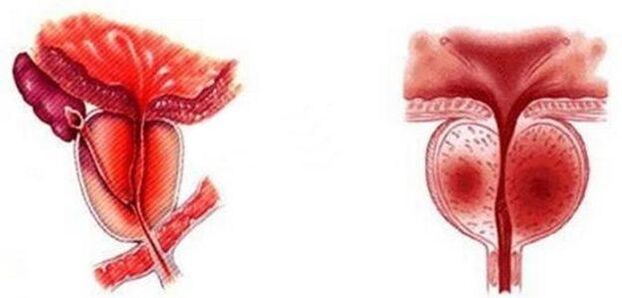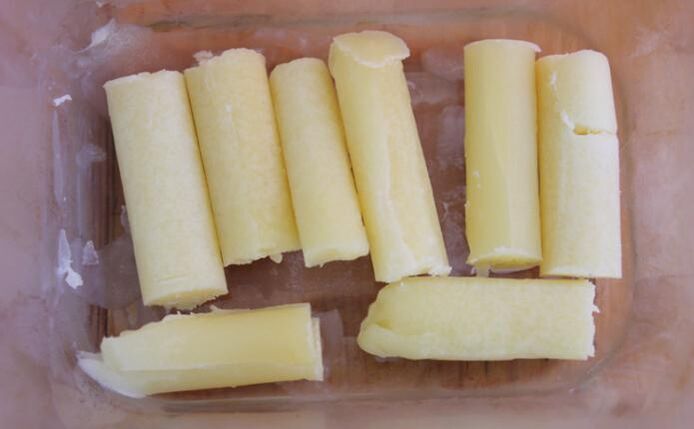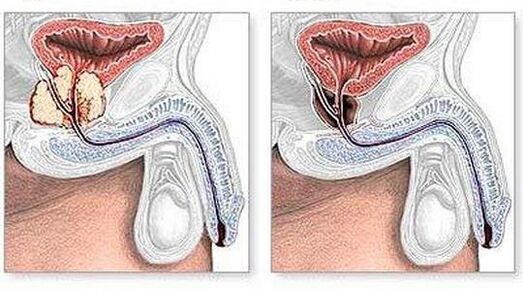
Chronic prostatitis (MKB-10. N41.1) is called the inflammatory process, which is observed for more than three months in the prostate gland tissue.Its characteristic is that in almost 70% of all cases, it continues without any symptoms.And only 15% of patients complain of manifestations of the disease.All other men have symptoms that only partially indicate prostate development and can often contact other diseases.Therefore, it is so important when a sign occurs to see a doctor who, after the exam, will show you how to treat chronic prostatitis.
The feature of the disease
Chronic prostatitis can diagnose not only in older people.People of young and medium are also subject to the disease.At risk are those who lead a sedentary lifestyle, adhere to sexual abstinence, or experience physical exercise in the perineum.That is,, the probability of chronic prostate in drivers, athletes is much higher than everyone else.
Among all the diseases of the men's reproductive system, chronic prostatitis takes the first place in prevalence, followed by cancer and benign hyperplasia of the DGPG prostate gland (prostate adenoma).Approximately every third person faces a prostate inflammation, and every fifth of them suffers from a chronic form of the disease.
In most cases, the cause of chronic prostatitis is transmitted diseases of the genitourinary system caused by infections.A little less often, it is caused by inflammatory processes associated with a change in a human hormonal background.
ClaSSIFICaTION
Similar to other inflammatory diseases, chronic prostatitis can have acute and chronic stages.Its classification is based on the following features:
- The presence of leukocytes in the urine.
- The presence of pathogenic bacteria in the urine, ejaculates or the secret of the gland.
Based on the classification, there are the following types of disease:
- Asymptomatic inflammatory prostatitis is characterized by a lack of symptoms of chronic prostatitis.It is possible to identify it randomly when the patient addresses a doctor with any other disease.
- Acute bacterial prostatitis.The patient has acute inflammation of the prostate tissue, pathogens are present in the urine, which lead to an increase in temperature and the development of body intoxication.
- Chronic bacterial prostatitis.The doctor observes typical signs of chronic inflammation.And in the analysis of urine and secrecy, the high content of leukocytes and bacteria is detected.
- Chronic pelvic pain syndrome.Such pain is considered the main symptom, as bacteria are not detected.To make a diagnosis of chronic prostatitis, the syndrome should be observed in a man for at least 3 months.
Causes of the disease
The main cause of chronic prostatitis is the penetration of pathogens (enterococci, intestinal sticks or prayers, etc.) in the prostate gland, etc.).Go to the prostate, bacteria can be in three ways:
- Through the urethra.
- Through the blood.
- Through the lymph.
According to statistics, 90% of cases of chronic prostatitis are a consequence of the development of acute prostate or a complication of urethritis.
In addition to entering a bacterial prostate, the causes of chronic prostate can be as follows:
- Sexual infections (STPP): herpes, trichomonas, gonococcus, chlamydia, etc.
- Stagnation processes in the pelvic area, which can provoke prostate inflammation.
- Reduction of immunity.This can lead to: vitamin deficiency, hormone balance violations, hypothermia, allergic reactions, significant physical and emotional stress, non -infected infections, etc.
- A sedentary lifestyle.
- Lightweight.
- Irregular sex life or disorders in the intimate sphere.
- Turning injuries.
- Dressed in close linen.
- Irrational nutrition (predominance in the diet of spicy foods).
- Lining for urination.
- Violation of the chair.
All of this can lead to circulatory disorders in the pelvic area, contribute to stagnant phenomena and the development of the inflammatory process.The consequences of the lack of therapy are infertility and powerlessness.
Symptoms of the disease
Signs of chronic prostatitis can be very different.Most often the patient complains about:
- Decrease in performance.
- Fast fatigue.
- Increased irritability.
- Anxiety.
- Sleep violation.
- hibernation
- Loss of appetite.
- Increased sweating.
Among the local symptoms:
- Urinary disorder.The patient feels frequent incentives, pain at first and end of urination.
- A painful pain that can give to the groin, sacrum, scrotum, under -lane bone or rectum.
- Pain for sex.
- Discharge to the pelvic muscle tension.
Unlike the acute phase, in a chronic disease, a violation of sexual functions often occurs.This is associated with the fact that stagnation is also inflammatory processes, affect the nerve endings that ensure the transmission of pulses in the brain.As a result, a violation of an elevation is possible, which weakens or ejaculation (premature spill), sensations during an orgasm (deleted orgasm) are deaf.Such symptoms of chronic prostatitis in men lead to fear of proximity, irritability, and as a result, sexual neurosis develops.
It is not easy to treat chronic prostatitis.How long it will take medication depends on the degree of pathology and the duration of the development of the disease.It is important to remember that if the symptoms of the disease are gone, it does not mean a final cure.Severe consequences of chronic prostatitis include gland tooth.This process can pass into the urethra.
Diagnosis of the disease
When he goes to the doctor, he will ask the patient with the symptoms available.Particular attention is paid to the frequency and nature of pain, impaired urination, sexual dysfunction.But due to the fact that chronic prostatitis can occur without any manifestation, some studies are needed:
- Clinical and bacterial urine analysis in which the amount of leukocytes and the presence of pathogenic microorganisms is determined.
- Analysis of the secret that can contain bacteria.
- A piece of mucosa in which the amount of leukocytes, the presence of macrophages and amyloid bodies is determined.
- Transuretral ultrasound makes it possible to identify an echobroblast of chronic prostatitis and determine the condition of the prostate.
High quality diagnosis is an important part of accurate treatment, as it makes it possible to distinguish chronic prostatitis from other pathologies with similar signs.
Treatment
This disease should have an integrated approach to therapy.In this case, the patient should allocate long treatment.The chronic prostate treatment regimen will be individual for each patient.Usually, the patient does not need hospitalization and he can be treated at home.A completely different issue is when the acute phase of the disease or its irritation against the backdrop of chronic prostate inflammation is subject to treatment.In a hospital, antibacterial therapy is used and deintoxic is performed.If necessary, an operation is needed.
Drug therapy
For comprehensive treatment of chronic prostatitis, the medication is prescribed in men, the effect of which is aimed at eliminating infection, normalizing blood circulation and hormone levels.To do this, use:
- Antibiotics.
- Non -steroidal anti -inflammatory drugs.
- Anticolinergic agents.
- Immunomodulators.
- Angioprotectors.
- Vasodilative drugs.
Before assigning an appointment, the doctor will analyze the pathogen.If the disease is not a bacterial origin, then the course of antibiotic therapy will be short.In the case where it is not possible to determine the type of pathological microflora by laboratory methods, a histological analysis of the prostate tissue is used.
As the disease restores, antibacterial therapy is prescribed for the purpose of prevention.For this, a drug is used, which was already used during treatment, but in a lower dose.
Knowing what chronic prostate is and what can cause its development, the specialist will pay attention to the pressure within the prostate gland and its ability to reduce.If this function is reduced, then stagnant phenomena and prostate inflammation can occur in the pelvis.Alpha-blockers are prescribed to normalize intrauterine pressure.
You can avoid painful injections and take pills using a candle.
For rapid and painful urination complaints, non-steroidal anti-inflammatory drugs are used in relation to alpha blockers.
When taking antibiotics turned out to be ineffective and symptoms such as pain and dysuria are stored, treatment is adjusted in order to be directed:
- Eliminate pain.To do this, use tricyclic antidepressants.
- Normalization of urination.Treatment is prescribed after urinodynamic analysis.With sphincter hyperactivity, antihistamines, tricyclic antidepressants and bladder rinsing with antiseptic solutions are shown.With the effectiveness of such treatment, neuromodulation and physiotherapy are used.
Methods No -DRUG
In order for the tablet treatment to be more effective, the doctor may recommend physiotherapy (electrophoresis, phonophoresis, laser therapy, mud treatment) and transectal hyperthermia, which is performed taking into account existing changes in prostate tissue and related diseases.When exposed to a temperature of 40 degrees, cellular immunity is activated.When exposed to a temperature of 45 degrees, the inhibition of nerve ending occurs, which helps to stop the pain.The use of laser therapy has a biostimulating effect.
In the absence of contraindications, the patient is performed by the prostate gland.Patients are often prescribed a course of psychotherapy and special exercises that can strengthen the perineum muscles.
Treatment with popular remedies
Along with the use of medicines, the manifestations of chronic prostatitis are treated by popular methods.Such treatment increases immunity and reduces pain.For this, in addition to herbal preparations, infusions and decoctions of plants, baths, etc.
The course of treatment with phytopreparation is at least 1 month and should be prescribed by a physician, as some of them may have contraindications for use.Treatment by popular methods suggests:
- Abundant drink (tea with Linden, Roseip, Raspberry).
- Every day before meals, you should drink 1 cup of freshly squeezed carrot, pear, cucumber juice.
- If the patient tries with pain, coniferous baths are used, a temperature of 37 degrees.The duration of the procedure is 20 minutes.
- If the patient does not have an allergy to honey, he is recommended to eat up to 100 grams of product daily.
- At home, you can independently make suppositories based on propolis or honey.You have to put them within 1 month.To prepare candles with propolis, take a mixture of glycerin, gelatin and water in proportions of 5: 1: 2. Add propolis there and distribute the mixture to the parchment.Put everything in the refrigerator, where the suppositories are completely frozen.
- Before going to bed, it is recommended to make a wormwood enema.To do this, 1 teaspoon of dried herbs is produced in 1 liter of boiling water.

Treatment with pumpkin seeds, aloe juice, parsley, chestnut and celandine is also considered effective.Parsley has an anti -inflammatory effect and is able to restore sexual function.Filiotherapists recommend this treatment with this plant:
- Drink 1 tablespoon of parsley juice daily before meals.
- 4 teaspoons of plant seeds pour 250 ml of boiling water and insisted on the thermos for the night.The next day they drink an infusion of 1 tablespoon every hour.
- 100 g from the crushed root of the plant is poured with 1 liter of water, wear a slow fire and boiled for 10 minutes.A decoction is drunk during the day.
An effective tool is pumpkin seeds.About 30 such seeds contain a daily dose of zinc, which is needed for male health.For treatment, you can make such a tool.500 g of pumpkin seeds are crushed into a meat grinder and mixed with 200 grams of natural honey.The balls are made from the resulting mass, the size of a walnut.Every day you need to eat 2 such balls.
Propolis helps to strengthen the body's protection and relieve inflammation.You can buy its solution at a pharmacy.For treatment, you should drink a glass of milk daily with 1 teaspoon of such a solution.
Moreover, Jambolli's decoctions, St. John's Wort, Echinacea are used for treatment, which are also used in cases where the disease appears without visible symptoms.
Surgery
Often, chronic prostatitis does not give symptoms, and patients seek medical help when serious changes in the prostate gland have occurred and chronic prostatitis is already powerless.Moreover, such complications can pose a threat to the patient's health.An example of complication can be called prostate sclerosis.
Due to the fact that such complications are often detected in young people, doctors use minimal invasive surgeries.The story of its use is: fimosa, involuntary release of urine, or, conversely, its delay, prostate abscess, significant gland growth in size, urethral blockage or bleeding.There are types of surgical intervention that are shown for chronic inflammation:
- Circumcision - used when the patient has fimosis.During surgery, the foreskin is dissected.
- Prostatectomy is a radical surgery during which the prostate is completely removed.It is performed in the event of a suspicion of the presence of a malignant tumor.
- The prostate resection is a partial removal of the gland, in the case of its sclerotic change.
- Elimination of adhesions.
- Drainage of a cyst or abscess.It is produced by endoscopy.For drainage, a special tube with a camera at the bottom is used.Such a device is inserted into the urethra lumen and makes it possible to control the flow of the operation.
- In the case of complaints about various sexual disorders (orgasm violation, painful ejaculation, etc.), the patient is performed by a canal cut e e.

The result of the surgical intervention will depend on the term of the diagnosis.In cases where there is a prostate adenoma, then manifestations of chronic prostate can be lubricated.This is observed in 70% of cases.25% of men learn about the development of chronic prostate during an examination of adenoma.And only 5 % of patients - during a preventive examination.
The condition for surgery is the lack of an effect with the conservative treatment of the disease.Therefore, surgery is needed to prevent complications and improve the quality of life.
However, it should be borne in mind that even after surgery it is possible to return the prostate.This happens in almost half of those operated.The contraindication to any operation is:
- Diabetes.
- Pathology of the liver.
- Diseases of the respiratory system.
- Mental disorders.
- Heart disease.
The prognosis of the disease
All those who face such a diagnosis are interested if chronic prostatitis can heal?The disease is considered curated if the symptoms do not occur a considerable period of time, the level of leukocytes in the urine is within normal, in the secret of the prostate there are no pathogenic bacteria, urination and sexual function are restored.
Most often, the prognosis is favorable in cases where the disease did not lead to irreversible processes, and the patient observes the treatment prescribed for it.
Prevention of the disease
Mando middle -aged man should prevent the prevention of diseases of the genitourinary system, which will also help reduce the chance of chronic prostatitis.Enough for this:
- Respect on the foundations of a healthy lifestyle, Lion Sport.
- Eat straight.It is important to consume a lot of protein foods (low -fat meat and fish, dairy products, eggs) and limit the amount of animal fats.At the same time, canned food, sharp, salty dishes, alcohol should be excluded from the menu.
- Regular sex life.It is important to avoid unprotected sex.
To prevent prostate disease, everyone, especially after 35 years, must monitor health and lead an active life.There is no need to ignore a medical examination, which always helps to identify the prostate in time and begin its treatment.It is important to remember that it is cured if detected at the initial stage, and the patient observes all the doctor's prescriptions.























